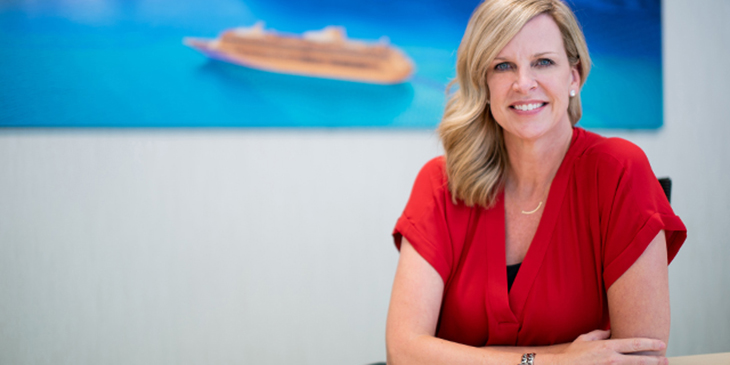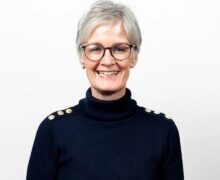Angie Stephen, Royal Caribbean Cruises’ new managing director for Asia-Pacific

Angie Stephen, Royal Caribbean Cruises’ new managing director for Asia-Pacific, compares and contrasts the western cruise market with this region, and finds that digital media proliferation here is shortening the cruise adoption process. Asians are taking quickly to cruising and there’s still plenty for her to learn, she tells Karen Yue.
You have been with Royal Caribbean Cruises for almost two decades, holding sales, marketing and business development roles. Is the sales and marketing of cruises across the various geographical regions different?
It is interesting to compare and contrast having come from the North America market which is fairly established, and then going into China for a year and a half, and now into Singapore.
The one consistency across these markets, despite their different levels of maturity, is the fragmentation and segmentation of the customer. How do you talk to them? That’s a challenge for any brand. It’s not just TV and newspapers anymore. Yet, it is now easier to target specific segments with your messages because digital allows you to do that.
Also similar, people want things at their fingertips. They want to be able to book quickly online and have an app for them to pay online. Having a presence in the online space is becoming so important for our brands and our travel partners in the distribution channel.
You came from China where WeChat is used for all activities, to this part of Asia where not all source markets are that proficient in app usage. How are you shifting your mindset?
I’m still learning about the different nuances in digital and app usage here, who pays more (attention) online, who still likes a phone call.
Look at our office here in Singapore. We still get a lot of walk-ins, which is great. We are still doing a lot of travel shows at the malls. The people in Singapore still want a human connection even though they do a lot of their travel research online. They still want to talk to a human to get their point of view.
In cruises, I think it is nice to offer a human connection (in the sales process) because there are so many choices within each brand – such as different staterooms, variety of pre-cruise activities, etc. It helps the customer to have someone – an expert – to talk to.
Is that why Royal Caribbean continues to invest in consumer travel shows and trade shows?
Of course. And I was very excited to participate in the MATTA Fair (Kuala Lumpur, September 7-9) and the NATAS Travel Fair (August 17-19) – my first travel shows since arriving at the Singapore office. I got to see what they were all about, and the hustle and bustle.
How do you compare Asia-Pacific’s growth with that of the western markets where cruises first took off? Is this region progressing fast enough in cruise adoption?
You know, I feel that Asia-Pacific is growing at a faster pace than it has in America. Just look at what Sean Treacy has accomplished in the three years that he was here. We started off as a seasonal market. Now we are practically a year-round market. We are bringing new capacity and bigger ships into Asia-Pacific, and we are getting a lot of demand from around the region.
Did you also see this region moving through the stages of adoption faster than the West? For instance, Asians going from awareness straight to adoption, skipping evaluation and trial?
I think because in this day and age people rely heavily on reviews and referrals, especially with the help of social media, that the word of mouth makes it easier for consumers to try something new. Everyone has limited vacation time and budget, but reviews and referrals, especially from trusted sources, have made it easier for consumers to try something new with confidence, and so the product adoption process gets shortened.
Think about your own buying behaviour. I’ve never heard of this product or brand, but hey, this influencer or close friend whom I trust is using it, so it must really be great.
Is the company engaging social media influencers?
Royal Caribbean International has an ongoing campaign called Brainwaves. It targets the younger audience, focusing on the innovation that the cruise line is known for, to get their inspiration on what innovations they would like to see on a vacation product. We partnered with a local architect on this. He isn’t your typical influencer or celebrity, but he is very well respected and regarded within his realm. This is a different angle to get Royal Caribbean into the fabric of people’s life.
We will also explore more options to film TV dramas on our ships.
That’s the best way to get the Chinese market which often draws travel inspiration from hit shows.
(Laughs) That’s right! Look at how the Singapore Tourism Board is promoting Crazy Rich Asians. I’ve asked the team how we could ride on the coattails of that, and get more people to come to Singapore and then go on a cruise vacation with us.
Royal Caribbean is helping to redevelop Penang’s Swettenham Pier (a joint venture agreement was signed on September 6). What else can the company do to raise the region’s readiness for cruising?
Education. It is important for the region to understand the value of cruise tourism and how the experience you give the guest when they arrive into your city can make them want to come back and stay for a longer time.
A lot of ports say to us, ‘Oh, we have a cargo terminal, is that OK?’ No, it’s not OK. It gives a different experience. We have to keep educating them. We are making progress.
We have a team in Miami that travels the world and works with organisations to develop ports, improve infrastructure and expand piers.
We have Captain Nick (Nikolaos Antalis, associate vice president, marine & safety, China/North-east Asia) who travels the region to make our needs known to governments that are considering port expansion and development. We have new ships coming out every year for the next decade, and they have to go somewhere. Destinations and port authorities have to build for the future in order to give cruise companies a reason to want to deploy their newest and best ships to their region.
What resources are being channelled into growing bookings out of Asia-Pacific?
With the growing middle-class, all eyes are on this region. The people here are gaining more disposable income and we want to give them a reason to spend it with us.
We are deploying newer, bigger ships to Asia-Pacific. Quantum Ultra Class Spectrum of the Seas was really crafted for the Asia-Pacific market. It will make its stop in Asia, in Singapore in May 2019. Bringing Quantum of the Seas back into Singapore in the fall after it undergoes dry dock is another example.
As well, we are bringing experienced people from our global headquarters into key markets like Australia and China. We make manpower investment here, but we also know that the western way is not the only way. We adapt to local market nuances and keep learning.
source: TTG Asia




